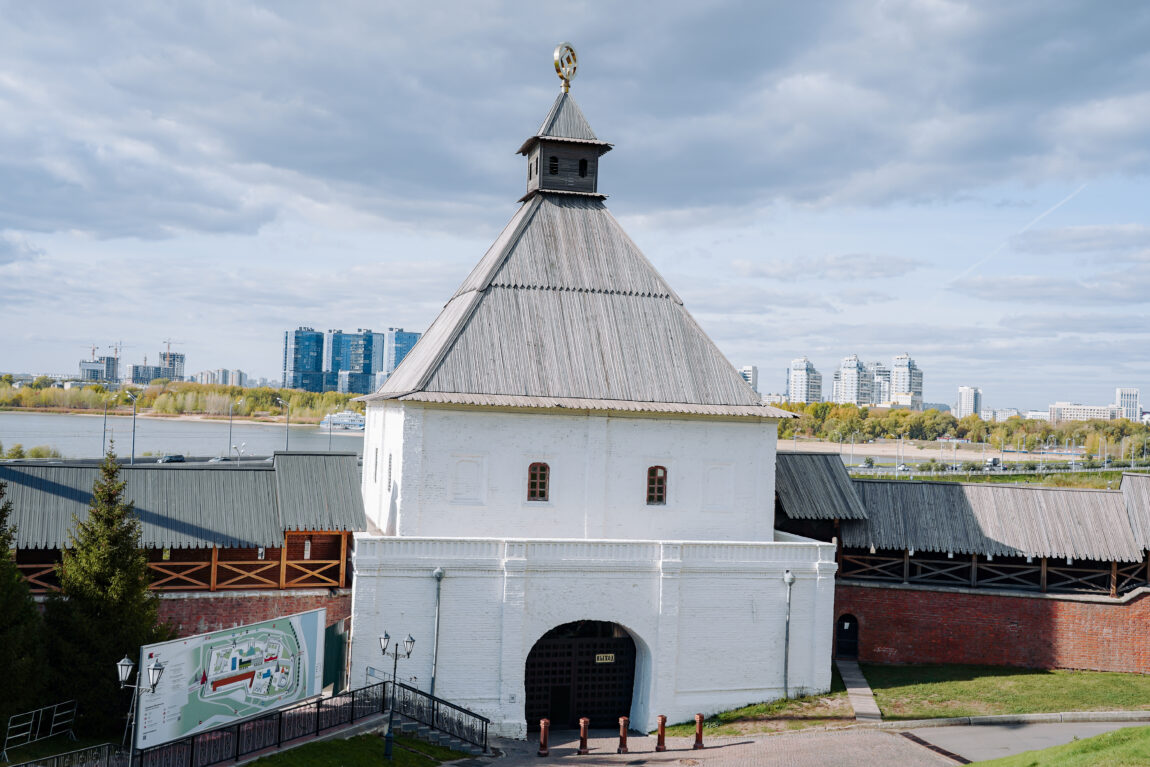Tainitskaya Tower

OBJECT DESCRIPTION
This gate tower was constructed in the second half of the 16th century by Ivan Shiryai and Postnik Yakovlev, two Pskov craftsmen, on the site of the Khan’s fortress, which was destroyed by explosion during the siege of the Nur-Ali Tower, or Muralleeva Tower as the Russians called it in the 16th century.
The tower was given its first name from the Church of St. Nicholas the Wonderworker and became known as Nikolskaya. Subsequently, the tower was renamed and became a Taynitskaya Tower because of its proximity to the exploded cache, which was an underground passageway leading to the spring where the fortress’s defenders obtained drinking water during the 1552 siege.
The rectangular brick tower was originally single-tiered, with a cranked passage, and finished at the top with rectangular crenelations and a wooden four-sided hipped roof. The tower acquired its current appearance in the 18th century, when it became a two-tiered tower. The passage connecting the first and second tiers is designed as a terrace with a stone parapet. The tower’s loopholes were facing the Kazanka River. The tower has a wooden hipped roof, with a guardhouse placed above it, and ends with a rotating UNESCO World Heritage Committee sign.
The tower was expected to face destruction at the beginning of the 19th century due to flooding of the Kazanka River; however, a massive buttress was built from the tower’s outside wall, allowing the monument to be preserved to this day.




